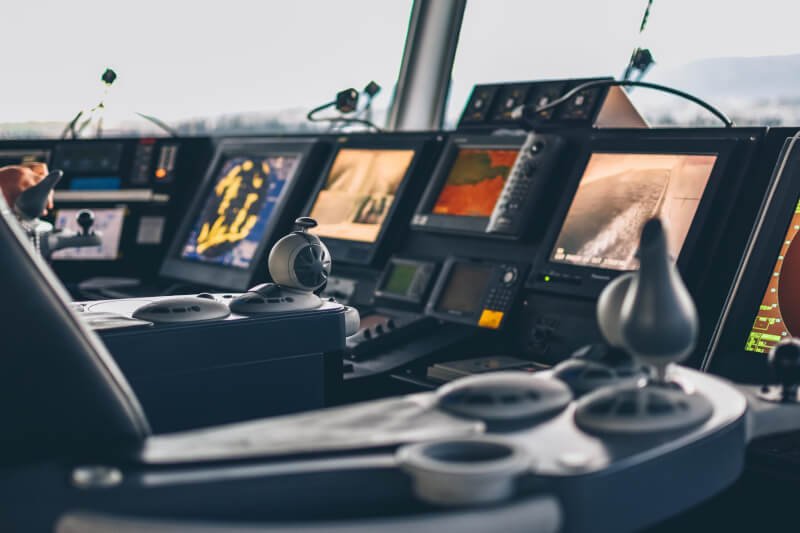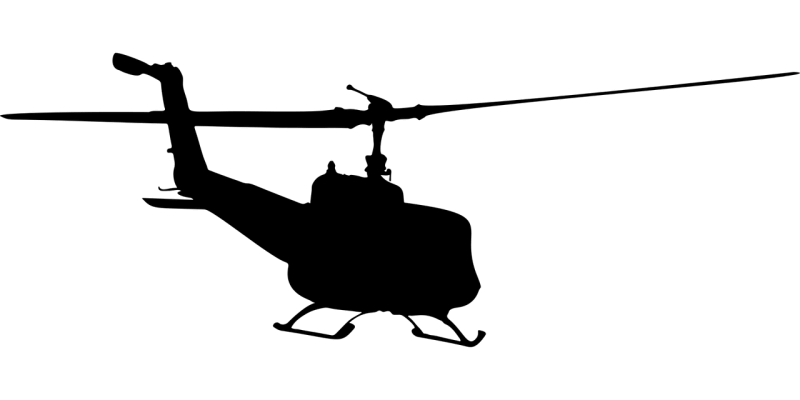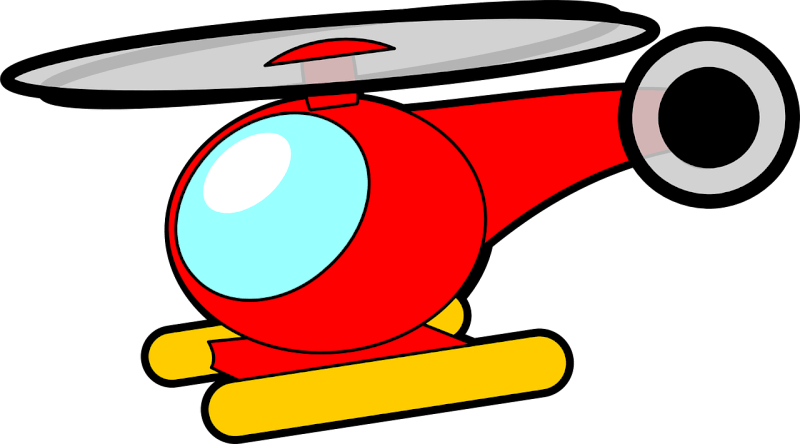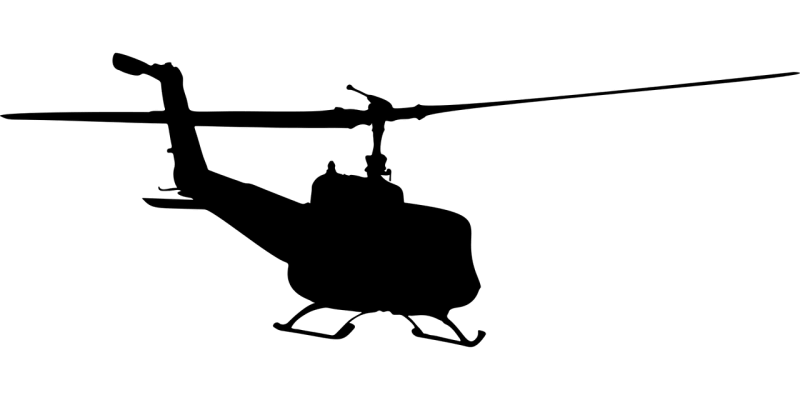So you’ve probably seen those small, remote-controlled helicopters buzzing around the park or whizzing through the air at high speeds and you can’t help but wonder, “What exactly is an RC helicopter?” Well, let’s take a closer look at these fascinating flying machines. An RC helicopter, short for remote-controlled helicopter, is a miniature aircraft that is controlled by a handheld transmitter. Unlike traditional helicopters piloted by humans, RC helicopters are operated by hobbyists and enthusiasts who utilize the transmitter’s joysticks to maneuver the aircraft in all directions. These nifty gadgets have gained popularity over the years, captivating both young and old with their ability to soar through the skies with agility and precision. An RC helicopter, short for Radio Controlled helicopter, is a miniature version of a real-life helicopter that is controlled remotely using a radio transmitter. RC helicopters are popular among aviation enthusiasts and hobbyists who enjoy flying and maneuvering these scaled-down aircraft. These helicopters are equipped with various components and systems that allow for precise control and mimic the movements of their full-sized counterparts.

History of RC Helicopters
Early developments
The history of RC helicopters can be traced back to the early 20th century when inventors and aviation enthusiasts began experimenting with various designs and mechanisms. The first successful flight of a RC helicopter is credited to Frenchman Etienne Oehmichen in 1924. He designed and built a coaxial helicopter, known as the “Helicoptere No. 1,” which utilized two counter-rotating main rotors to achieve stability and control.
Advancements in the 20th century
Throughout the 20th century, significant advancements were made in the field of RC helicopter technology. In the 1950s, American inventor and engineer Norman Spicer created the first commercially available RC helicopter, known as the “Kilburg.” This helicopter featured single rotor design with a tail rotor for anti-torque control.
In the following decades, advancements in materials and electronics led to the development of more sophisticated RC helicopter models. Improved servo technology, brushless motors, and advanced gyro stabilization systems allowed for greater stability, control, and maneuverability.
Popularization and commercial availability
With the increasing popularity of RC helicopters, manufacturers began producing a wide range of models that catered to hobbyists of different skill levels. Today, RC helicopters are readily available for purchase in hobby stores and online retailers, offering enthusiasts a variety of options in terms of size, design, and features.
Types of RC Helicopters
Coaxial helicopters
Coaxial helicopters feature two sets of counter-rotating main rotors stacked on top of each other. The rotors spin in opposite directions and provide stability by canceling out the torque generated by each other. This design allows for simplified control and hovering stability, making coaxial helicopters ideal for beginners or indoor flying.
Fixed-pitch single rotor helicopters
Fixed-pitch single rotor helicopters have a single main rotor and a tail rotor for anti-torque control. In this design, the pitch of the rotor blades remains fixed, meaning they do not change their angle during flight. These helicopters offer greater maneuverability, as the difference in rotor speed controls the helicopter’s ascent, descent, and forward flight.
Collective-pitch single rotor helicopters
Collective-pitch single rotor helicopters also have a single main rotor and a tail rotor. However, unlike fixed-pitch helicopters, the pitch of the main rotor blades can be adjusted collectively. This allows for greater control over the helicopter’s altitude and maneuverability. Collective-pitch helicopters are commonly used by experienced pilots for aerobatic flying and 3D maneuvers.
Multirotor helicopters
Multirotor helicopters, also known as quadcopters or hexacopters, feature multiple sets of rotors arranged in a symmetrical pattern. These helicopters use independent control of rotor speeds to achieve stability and control. Multirotor helicopters are known for their agility, versatility, and ability to hover in one place, making them popular for aerial photography, videography, and other applications.
Scale model helicopters
Scale model helicopters are replicas of full-sized helicopters, meticulously designed and built to mimic the appearance and functionality of their real counterparts. These helicopters often feature detailed designs and realistic features, including working lights, retractable landing gear, and sound systems. Scale model helicopters are popular among both recreational and professional users, with applications ranging from airshows and competitions to cinematography and military training.

Components of an RC Helicopter
Frame
The frame of an RC helicopter serves as the structural backbone, supporting and enclosing the various components. It is typically made of lightweight materials such as carbon fiber or aluminum to minimize weight while maintaining durability.
Main rotor system
The main rotor system consists of the main rotor blades, the rotor hub, and the swashplate mechanism. The rotor blades generate lift and control the helicopter’s flight. The rotor hub connects the blades to the main shaft, allowing for rotational movement. The swashplate mechanism translates the inputs from the radio control system into precise movements of the rotor blades, enabling the helicopter to hover, ascend, descend, and perform maneuvers.
Tail rotor system
The tail rotor system consists of the tail rotor blade, the tail rotor shaft, and the tail rotor servo. The tail rotor blade provides anti-torque control, counteracting the torque generated by the main rotor. The tail rotor shaft connects the blade to the tail boom, allowing for rotational movement. The tail rotor servo controls the pitch of the tail rotor blade, facilitating directional control of the helicopter.
Power system
The power system of an RC helicopter typically consists of an electric motor, a speed controller, and a battery. The electric motor provides the necessary power to drive the main rotor and tail rotor. The speed controller regulates the power and manages the flow of electricity from the battery to the motor. The battery supplies the electrical energy required for flight, with lithium polymer (LiPo) batteries being commonly used due to their high energy density and low weight.
Radio control system
The radio control system comprises a transmitter and a receiver. The transmitter is held by the pilot and sends control signals wirelessly to the helicopter. The receiver, mounted on the helicopter, receives these signals and relays them to the various servos and speed controller, allowing for precise control of the helicopter’s movements.
Battery
The battery provides the electrical energy required to power the helicopter. The battery’s capacity and voltage rating determine the flight time and performance of the helicopter. It is important to choose a battery that matches the power requirements of the helicopter and adhere to proper charging and safety guidelines.
Gyro
The gyro, short for gyroscope, is a crucial component that helps stabilize the helicopter during flight. It detects any unwanted movements or deviations from the desired orientation and makes adjustments in the control system to maintain stability. Gyros are especially important for helicopters that perform aerobatic maneuvers or fly in challenging conditions.
Coaxial Helicopters
Definition and working principle
Coaxial helicopters, as mentioned earlier, feature two sets of counter-rotating main rotors stacked on top of each other. The rotors spin in opposite directions, with the upper rotor counteracting the torque generated by the lower rotor. This design provides inherent stability and eliminates the need for a tail rotor. Coaxial helicopters achieve forward and backward movement by adjusting the speed of the rotors independently.
Advantages and disadvantages
Coaxial helicopters are popular among beginners due to their stability and simplified control. The absence of a tail rotor reduces complexity and allows for easier maneuvering. These helicopters are also suitable for indoor flying, as the coaxial rotor system provides precise hovering and stability.
However, coaxial helicopters have limitations in terms of speed and agility compared to other types of RC helicopters. The presence of two rotors increases complexity and adds weight, impacting flight performance. Additionally, coaxial helicopters may require more maintenance and adjustments to ensure proper balance and synchronization between the rotors.
Applications
Coaxial helicopters are commonly used for training purposes, as they offer a gentle learning curve for novice pilots. They are also used for indoor flying activities and are popular among hobbyists who want to enjoy the experience of flying a helicopter without the added complexities of advanced controls. Overall, coaxial helicopters serve as an excellent entry point for those interested in the world of RC helicopters.

Fixed-Pitch Single Rotor Helicopters
Definition and working principle
Fixed-pitch single rotor helicopters have a single main rotor and a tail rotor for anti-torque control. The main rotor blades have a fixed angle, meaning they do not change their pitch during flight. Instead, changes in altitude and forward flight are achieved by adjusting the rotor speed. The tail rotor counters the torque generated by the main rotor, allowing for controlled turns and yaw movements.
Advantages and disadvantages
Fixed-pitch single rotor helicopters offer greater maneuverability compared to coaxial helicopters. The ability to control the rotor speed allows for precise control over the helicopter’s climb, descent, and forward flight. These helicopters are often more responsive and agile, making them suitable for intermediate pilots looking to enhance their flying skills.
However, fixed-pitch helicopters require more skill and experience to fly compared to coaxial helicopters. The absence of collective pitch control limits the helicopter’s aerobatic capabilities and can make advanced maneuvers challenging. Additionally, the presence of a tail rotor adds complexity and increases the potential for mechanical issues.
Applications
Fixed-pitch single rotor helicopters are widely used for recreational flying, aerial photography, and videography. They offer a good balance between stability and maneuverability, making them suitable for capturing aerial footage. These helicopters can also be used for competitive flying, such as precision aerobatics and timed race courses. Overall, fixed-pitch helicopters provide an engaging flying experience for intermediate pilots.
Collective-Pitch Single Rotor Helicopters
Definition and working principle
Collective-pitch single rotor helicopters, also known as collective-pitch helicopters or CP helicopters, have a single main rotor and a tail rotor. The main rotor blades can change their pitch collectively, meaning they can all be adjusted to the same angle simultaneously. This allows for precise control over the helicopter’s altitude, climb rate, descent rate, and maneuverability. The tail rotor provides anti-torque control and maintains directional stability.
Advantages and disadvantages
Collective-pitch helicopters offer the most advanced level of control and maneuverability among RC helicopters. The ability to change the pitch of the rotor blades allows for a wide range of aerobatic maneuvers, including inverted flight and 3D maneuvers. These helicopters can perform precise and aggressive maneuvers with ease, making them popular among experienced pilots.
However, collective-pitch helicopters require a high level of skill and experience to fly. The complex control inputs and the need for precise adjustments demand dedication and practice. Additionally, these helicopters can be more expensive to purchase and maintain compared to fixed-pitch or coaxial helicopters.
Applications
Collective-pitch helicopters are commonly used for aerobatic and 3D flying, where pilots perform advanced maneuvers and tricks. They are popular within the RC helicopter community, with many enthusiasts participating in competitions and airshows to showcase their skills. Additionally, collective-pitch helicopters are utilized by professional users, such as cinematographers and industrial inspectors, who require precise control and stability for their specific applications.

Multirotor Helicopters
Definition and working principle
Multirotor helicopters, also referred to as multicopters or multirotor drones, are helicopters that feature multiple sets of rotors. The most common configuration is quadcopters, which have four rotors arranged in a square pattern. Each rotor can be independently controlled in terms of speed, allowing for precise control over the helicopter’s movement. By adjusting the speed of each rotor, multirotor helicopters can hover in one place, ascend, descend, and perform agile maneuvers.
Advantages and disadvantages
Multirotor helicopters offer several advantages over traditional single rotor helicopters. Their design provides excellent stability, making them easy to fly for beginners. The ability to hover in one place and fly in any direction makes multirotor helicopters highly maneuverable and versatile for various applications. Additionally, their simple design and construction make them more accessible and budget-friendly.
However, multirotor helicopters have limited flight time compared to other types of RC helicopters. They require a significant amount of power to maintain stable flight, which can drain the battery quickly. The multiple rotors also generate more noise compared to single rotor helicopters, which can be a consideration for certain applications.
Applications
Multirotor helicopters have gained immense popularity in recent years due to their diverse range of applications. They are widely used for aerial photography and videography, providing stunning aerial footage for films, commercials, and documentaries. Multirotor helicopters are also utilized for surveying and mapping, search and rescue operations, agricultural monitoring, and even recreational racing. Their versatility and maneuverability make them ideal for capturing aerial perspectives and accessing areas that are difficult to reach by other means.
Scale Model Helicopters
Definition and purpose
Scale model helicopters are replicas of full-sized helicopters, designed and built to resemble their real counterparts in terms of appearance and functionality. These helicopters are meticulously crafted with attention to detail, often featuring working parts such as lights, retractable landing gear, and even sound systems. Scale model helicopters range in size from small indoor models to large outdoor models, some with rotor diameters exceeding 1 meter.
The purpose of scale model helicopters is to provide a realistic and immersive flying experience. They allow enthusiasts to replicate the look and feel of piloting a real helicopter, providing a unique sense of accomplishment and enjoyment.
Advanced features and realism
Scale model helicopters are equipped with advanced features to enhance realism. Some models include functioning doors, rotating rotor blades, and even simulated engine noises. The attention to detail in these models is remarkable, with intricate paint schemes and accurate markings to replicate the specific helicopter they are modeled after.
Additionally, scale model helicopters often feature advanced flight stabilization systems and computerized flight control units. These technologies help maintain stability and assist with flight maneuvers, allowing pilots to focus on controlling the helicopter.
Recreational and professional use
Scale model helicopters are popular among recreational users who enjoy the challenge and satisfaction of building and flying intricately detailed replicas. There are several clubs and organizations dedicated to scale model helicopter flying, offering opportunities for pilots to showcase their models and participate in friendly competitions and events.
Furthermore, scale model helicopters are also used by professionals in the film and television industry. They provide a cost-effective and safe alternative to full-scale helicopters for aerial shots. Scale model helicopters allow filmmakers to capture realistic and breathtaking aerial footage without the need for expensive helicopter rentals and large film crews.

Conclusion
In conclusion, RC helicopters have come a long way since their early developments in the 20th century. From coaxial helicopters to multirotor helicopters, there is a wide range of options available for pilots of all skill levels and interests. Each type of RC helicopter offers its own unique advantages and applications, allowing enthusiasts to find the perfect fit for their flying adventures.
The future of RC helicopters holds exciting potential for growth and innovation. Advancements in technology, such as improved battery life, brushless motors, and enhanced flight control systems, continue to enhance the performance and capabilities of RC helicopters. As the hobby evolves, we can expect even more realistic scale models, increased flight times, and further integration with other technologies such as artificial intelligence and virtual reality.
Whether you are a beginner, an experienced pilot, or simply someone fascinated by aviation, RC helicopters offer an exhilarating and rewarding hobby. So grab your transmitter, power up your helicopter, and take to the skies with your very own miniature aircraft! The possibilities for exploration, creativity, and enjoyment are endless in the world of RC helicopters.


